This is a list of aviation-related events from 1902:
This is a list of aviation-related events during the 19th century :
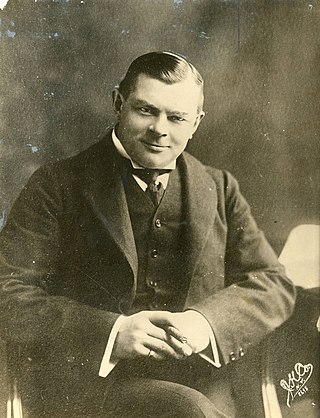
Charles Urban was a German-American film producer and distributor, and one of the most significant figures in British cinema before the First World War. He was a pioneer of the documentary, educational, propaganda and scientific film, as well as being the producer of the world's first successful motion picture colour system.

This Man's Navy is a 1945 World War II film about U.S. Navy blimps directed by William A. Wellman and starring Wallace Beery, Tom Drake, Jan Clayton and James Gleason. The supporting cast features Selena Royle and Beery's brother Noah Beery Sr., and presents a rare opportunity to see both Beery brothers work together in their later years. The picture is also one of the very few films, other than training films, to depict U.S. Navy airship operations.
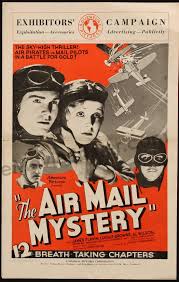
The Airmail Mystery is a 1932 Universal pre-Code movie serial directed by Ray Taylor, written by Ella O'Neill, starring James Flavin and Wheeler Oakman, and featuring Al Wilson doing the aerial stunts. The Airmail Mystery was Universal's first aviation serial that set the pattern for the aviation serials and feature films to follow. The film also marks the film debut of James Flavin. The Airmail Mystery is considered a lost film.
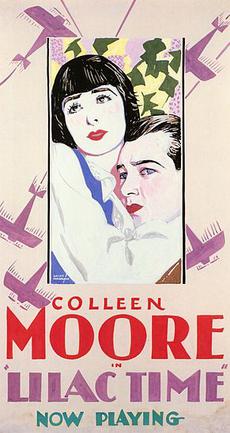
Lilac Time is a 1928 American synchronized sound romantic war film directed by George Fitzmaurice and starring Colleen Moore and Gary Cooper. While the film has no audible dialog, it was released with a synchronized musical score with sound effects using the sound-on-disc Vitaphone process. The film is about young American aviators fighting for Britain during World War I who are billeted in a field next to a farmhouse in France. The daughter who lives on the farm meets one of the new aviators who is attracted to her. As the flyers head off on a mission, the young aviator promises to return to her.
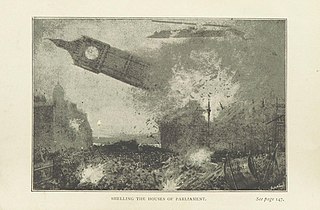
Hartmann the Anarchist or The Doom of the Great City is a science fiction novel by Edward Douglas Fawcett first published in 1893. It remained out of print for over 100 years and has only recently been re-published.

Walter Robert Booth was a British magician and early pioneer of British film. Collaborating with Robert W. Paul and then Charles Urban mostly on "trick" films, he pioneered techniques that led to what has been described as the first British animated film, The Hand of the Artist (1906). Booth is also notable for making the earliest film adaptation of A Christmas Carol with the silent film Scrooge, or, Marley's Ghost (1901).
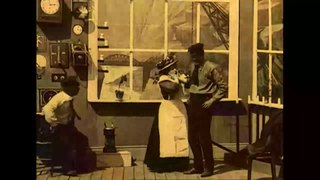
The Airship Destroyer is a 1909 British silent science fiction trick film directed by Walter R. Booth.
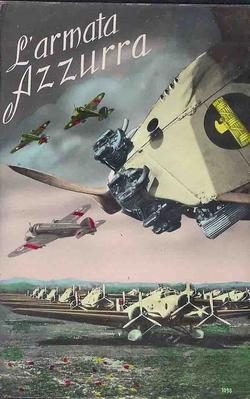
L'Armata Azzurra is a 1932 Italian aviation docu-drama and adventure film directed by Gennaro Righelli and starring Germana Paolieri and Ennio Cerlesi. It was Italy's first aviation drama film, with a fictional story that celebrated the Italian Air Force.
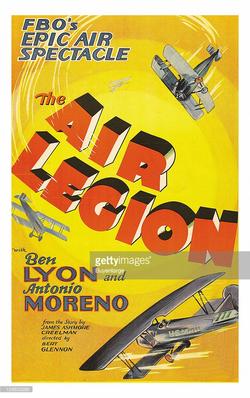
The Air Legion is a 1929 aviation silent film about airmail produced and distributed by Film Booking Offices of America(FBO) and was released just as FBO was being turned into RKO Pictures. In Canada, the film was distributed by the Alliance Communications Corporation. Aviation historian Michael Paris considered the film as "virtually the last silent film" on the topic of airmail flying.

The Flying Fool is a 1929 aviation-themed film produced and distributed by Pathé Exchange as both a silent film and sound film just as Hollywood was transitioning to filming with sound. Tay Garnett directed and William Boyd, Russell Gleason and Marie Prevost starred.

The Lost Zeppelin is a 1929 sound adventure film directed by Edward Sloman and produced and distributed by Tiffany-Stahl. The film stars Conway Tearle, Virginia Valli and Ricardo Cortez.

Hard-Boiled Haggerty is a 1927 American silent war film directed by Charles Brabin. The film stars Milton Sills and Molly O'Day, taking on two roles as both the character Germaine and her look-alike sister. Hard-Boiled Haggerty was one of the first American films to portray aerial combat in World War I.
Edward Douglas Fawcett was an English mountaineer, philosopher and novelist.

Flying Romeos is a 1928 American comedy adventure directed by Mervyn LeRoy and written by John McDermott, Sidney Lazarus, Gene Towne and John W. Conway. The film stars the comedy team of Charles Murray and George Sidney, stars of Universal's popular "The Cohens and Kellys" comedies, moonlighting at First National Pictures. Other sidekicks included Fritzi Ridgeway, Lester Bernard, Duke Martin, James Bradbury Jr. and Belle Mitchell. Flying Romeos was released on February 26, 1928, by First National Pictures, typically a B movie studio.

The Airship, or 100 Years Hence is an American adventure comedy-drama silent short film written, produced and directed by J. Stuart Blackton. The film stars Blackton and Florence Lawrence. It was released on April 25, 1908 by The American Vitagraph Company; a partial print of The Airship, or 100 Years Hence is preserved in the Paper Print Collection. The Airship, or 100 Years Hence advertised that it would be "a forecast of a probable means of air navigation in the coming century."

The Twentieth Century Tramp; or, Happy Hooligan and His Airship is an American silent short film produced and directed by Edwin S. Porter and released in 1902. This film is an adaptation of the cartoon Happy Hooligan, played by J. Stuart Blackton.

Air Police is a 1931 aviation sound film about air police produced by George W. Weeks Productions. It was distributed by Sono Art-World Wide Pictures and William Steiner Productions. Air Police was directed by Stuart Paton and stars Kenneth Harlan, Josephine Dunn, Richard Cramer and Charles Delaney.
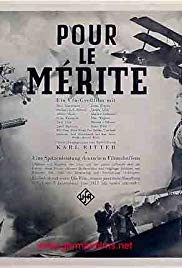
Pour le Mérite is a 1938 propaganda film produced and directed by Karl Ritter for Nazi Germany. The film follows the story of officers of the Luftstreitkräfte in the First World War who were later involved in the formation of the Luftwaffe. Pour le Mérite propagates the "stab legend", which consigns the German military defeat in World War I to an alleged treason in the homeland. At the same time, Ritter also glorifies the former fighter pilots as heroes of National Socialism.

















